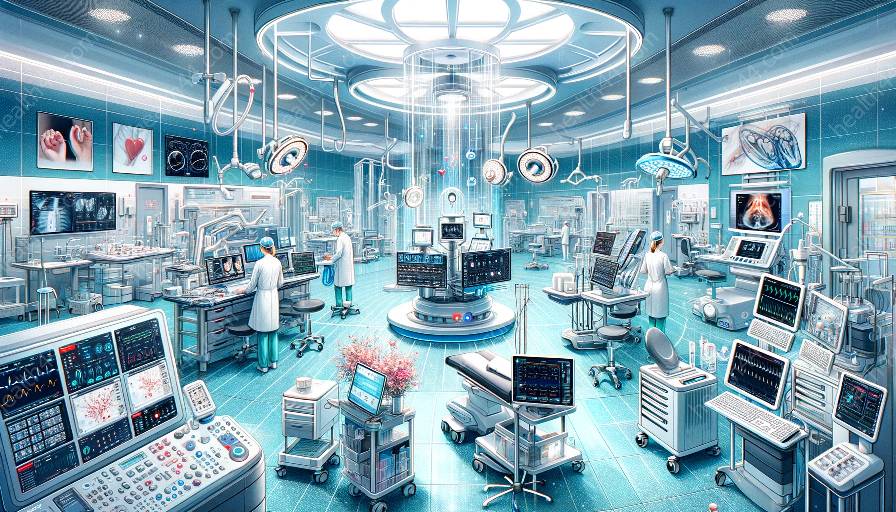Biomechanics plays a critical role in the development of medical devices for pediatric orthopedics by informing the design and functionality of orthopedic devices for children. Understanding the biomechanics of pediatric patients is essential for creating effective and safe medical devices that meet the unique needs of younger individuals.
The Importance of Biomechanics in Pediatric Orthopedics
Biomechanics is the study of the mechanical aspects of living organisms, including the movement, structure, and function of biological systems. In the field of pediatric orthopedics, biomechanics is instrumental in understanding the musculoskeletal system of children and how it differs from that of adults.
Children's bones, muscles, and joints are still developing, and their growth plates are particularly vulnerable to injury. Biomechanical research helps identify the specific biomechanical properties and response of pediatric musculoskeletal tissues, which is crucial for designing medical devices that support and promote proper growth and development while addressing orthopedic conditions and injuries.
Biomechanical Considerations for Pediatric Medical Devices
When developing medical devices for pediatric orthopedics, biomechanics informs various crucial aspects of the design and functionality of these devices. For example, the biomechanical properties of a child's bone, such as its density, flexibility, and strength, must be taken into account when designing implants, braces, or other orthopedic devices to ensure optimal fit and performance.
Biomechanics also guides the development of pediatric orthopedic devices by considering the unique movement patterns and forces experienced by children during physical activities and daily living. Understanding the biomechanics of activities such as walking, running, and jumping is essential for designing orthopedic devices that support natural movement while providing stability and protection.
Additionally, biomechanical analyses contribute to the customization of medical devices for pediatric orthopedics, taking into consideration the individual differences in patients' biomechanical characteristics and the specific biomechanical demands of various orthopedic conditions.
Incorporating Biomechanical Insights into Orthopedic Device Design
Integrating biomechanical insights into the design process of pediatric orthopedic medical devices involves a multidisciplinary approach that combines expertise in biomechanics, orthopedics, engineering, and materials science. Biomechanical testing and computational modeling help evaluate the performance, durability, and safety of orthopedic devices intended for pediatric use.
Advanced imaging techniques, such as 3D scanning and motion analysis, assist in capturing the unique anatomical and biomechanical characteristics of pediatric patients, enabling the development of patient-specific orthopedic solutions. Furthermore, biomechanical simulations and finite element analysis contribute to predicting the behavior of medical devices within the dynamic and diverse biomechanical environments encountered in pediatric orthopedics.
Advancements in Biomechanics-Driven Pediatric Orthopedic Devices
Recent advancements in biomechanics have led to the development of innovative medical devices specifically tailored for pediatric orthopedic care. For example, state-of-the-art bracing systems utilize cutting-edge materials and ergonomic designs informed by biomechanical principles to provide effective support for children with orthopedic conditions.
Biomechanics-driven implants, such as growth-friendly devices for addressing spinal deformities in children, are designed to accommodate the unique biomechanical needs of growing bones and ensure proper skeletal development while correcting musculoskeletal disorders.
Moreover, wearable sensor technologies integrated into orthopedic devices enable real-time biomechanical monitoring, allowing healthcare providers to assess the functional performance and biomechanical response of pediatric patients to the prescribed medical devices.
Challenges and Future Directions
Despite the significant progress in leveraging biomechanics for pediatric orthopedics, there are challenges that require ongoing attention. Ensuring the safety and long-term effectiveness of orthopedic devices for children demands comprehensive biomechanical assessment and rigorous testing protocols to address the complexities of growth and development.
Furthermore, the integration of emerging biomechanical technologies, such as bioresorbable materials and patient-specific 3D-printed implants, presents opportunities for enhancing the precision and customization of pediatric orthopedic devices.
In the future, the continued collaboration between biomechanics researchers, orthopedic surgeons, and medical device engineers will drive the development of next-generation pediatric orthopedic devices that optimize biomechanical performance, promote natural growth, and improve the overall outcomes for pediatric patients with orthopedic conditions.


